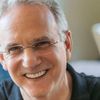This is the first in a three-part series about the history, activities and future of The Harwood Institute.
I've been doing this work for nearly 30 years, but a lot of people don't realize that I actually started this organization as a for-profit called The Harwood Group back in 1988. At the time, I was disillusioned with what I saw happening in society, politics and particularly among nonprofits that seemed more interested in their own good than in solving problems for the common good.
I didn't want to work with people who weren't interested in getting their hands dirty. I wanted to make sure that people had a voice in society, that their voice mattered and that the things that we do matter to them.
You see, I know from personal experience what it's like not to have a voice. I spent a great deal of my childhood in hospitals, diagnosed at that time with cystic fibrosis -- a death sentence in the '60s. I remember lying in hospital beds, with doctors and others standing around talking about me, but never actually talking to me. A doctor once looked at my mother and said, "Face it; he's a lemon." I know what it feels like to live in a world where you know tomorrow will probably be worse than today.
Fortunately for me, the doctors were wrong. And thanks to a number of people who took me under their wings during my childhood and gave me a sense of hope, I didn't fall through the cracks. But all of those experiences set me on a path to make sure that we don't leave people behind, that we build a society where we look out for one another, and that community is truly a common enterprise.
So after having worked on 20 political campaigns by the time I was 23 years old, and for a number of nonprofits, I realized I wanted to have more of an impact on society. So I decided to start a small, entrepreneurial organization from my one-bedroom apartment in Washington, D.C. I wanted to create something that would demonstrate that there was a market in society for real change -- a highly catalytic enterprise that would focus on learning and innovation to help organizations and people in communities address public challenges in a way that strengthened communities themselves.
For the first 10 years, The Harwood Group grew, and during that time, we had a great number of important successes. In 1993, we produced a first-of-its-kind report, Citizens and Politics: A View from Main Street. That report helped bring attention to the belief that Americans were apathetic about politics and public life; rather, they felt pushed out.
During that time we transformed some of the largest newsrooms in the country, before the advent of the Internet, to help them address their declines in readership and their need to be connected to their communities. As a result of our work together, newspapers like The Arizona Republic, The Virginian-Pilot, the Orange County Register, and others redefined how they authentically reflected the community in their reporting.
We also learned a great deal about how people engage in productive ways around contentious and complex issues and how to spur that kind of engagement. This included an effort called Georgia Health Decisions, where in the early 1990s we worked with stakeholders from all walks of life over two years to tackle the tough trade-offs and choices people need to make to deliver quality health care for everyone. This work drew a sharp contrast to the national debate on health care that was going on at the same time.
In 1998, we created The Harwood Institute for Public Innovation, a nonprofit, in part because major foundations were coming to us and wanting to invest in spreading our work. The Harwood Institute and The Harwood Group co-existed for some time before we decided to consolidate into one nonprofit entity.
Our work at the Institute in the early years allowed us to continue innovating. What we came to realize through our work is that to be effective at driving change in communities, and do that in a way that didn't leave the community behind, people needed to have a certain orientation and set of practices that we now call being turned outward. Being turned outward is not something you simply teach though; rather, it's a practice, or discipline, that takes time and coaching to develop. It's rooted in building a deep relationship with your community and listening to the community voice, but it's fundamentally about what you do with that voice and the kind of action you take.
We packaged that approach and in the mid-2000s began using it to formally develop people and organizations through a combination of training and coaching support. And that has led to us to where we are today, which I will talk more about in my next post.
